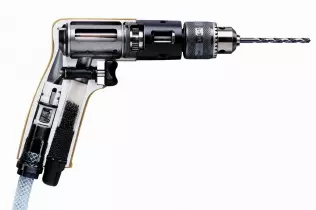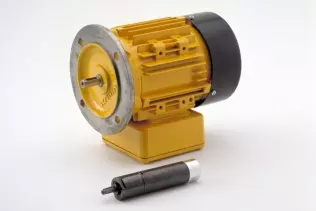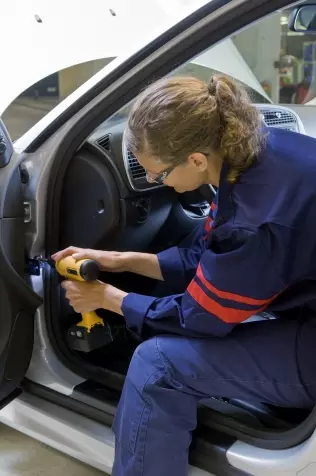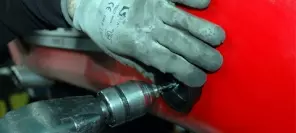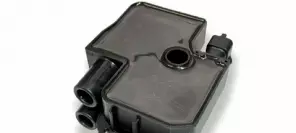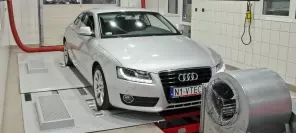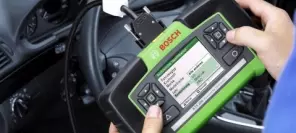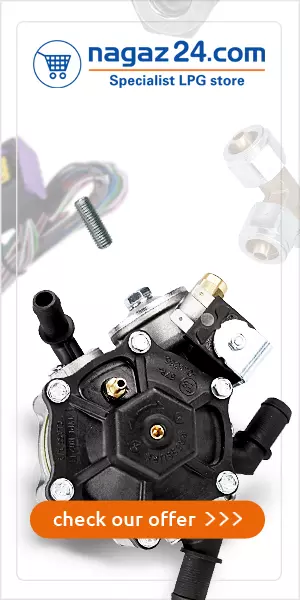- Main page
- Search
- Up to date
- Products
- Technology
- Vehicles
- Video
- Conversion Payback Simulator
Port Injection - Conversion Payback Simulator
Direct Injection - Conversion Payback Simulator
Diesel - Newsletter
Power tools or air-powered tools?
 loading results...
loading results...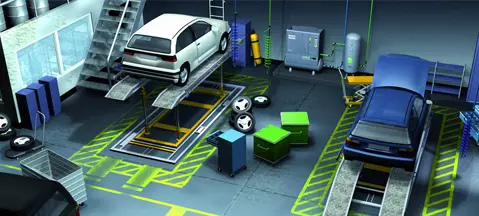 © Atlas Copco
© Atlas Copco 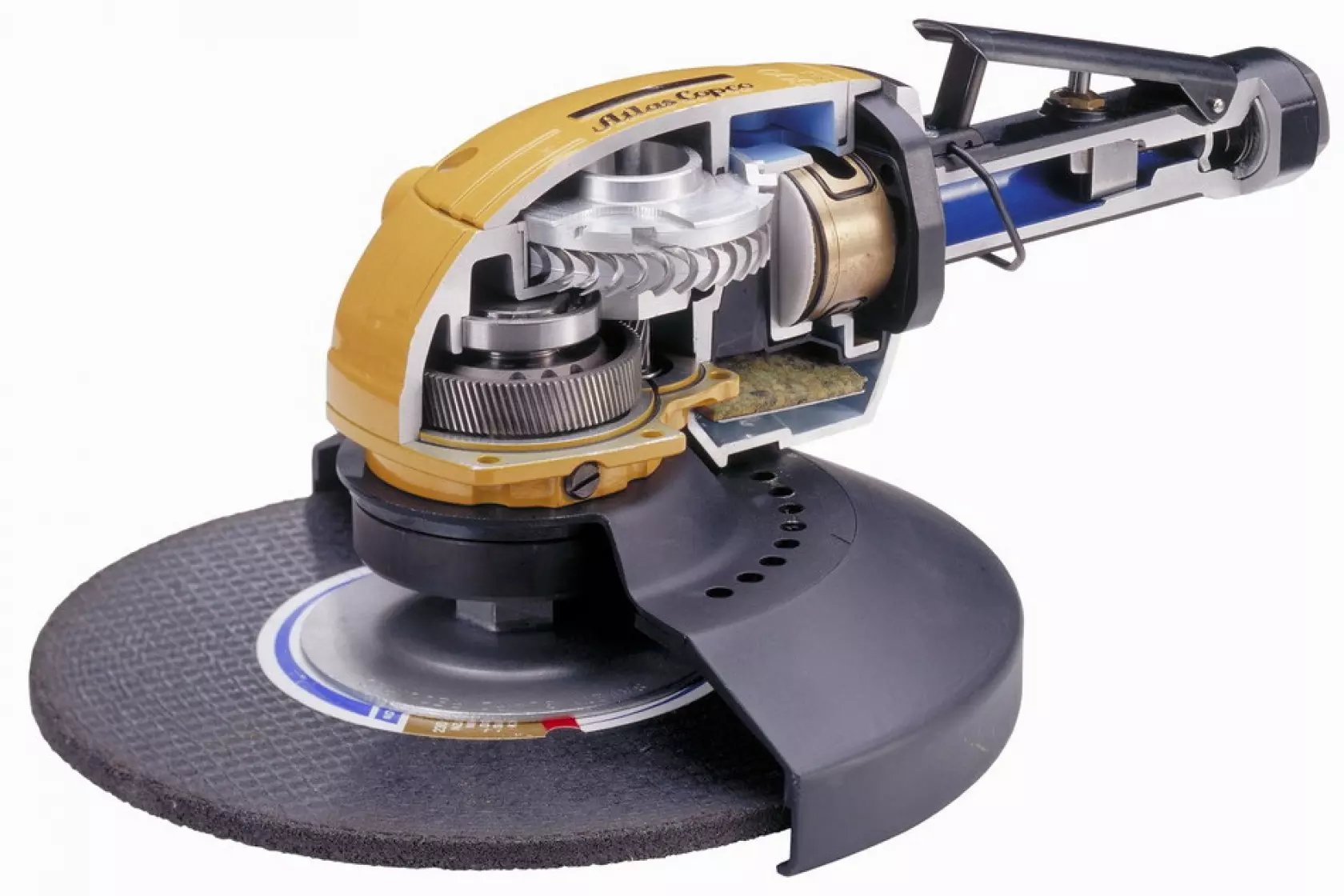 The turbine engine in an angle grinder. In the absence of friction surfaces, the air must be free of oil. Other type of connector prevents connecting this tool to a system equipped with lubricators
The turbine engine in an angle grinder. In the absence of friction surfaces, the air must be free of oil. Other type of connector prevents connecting this tool to a system equipped with lubricators 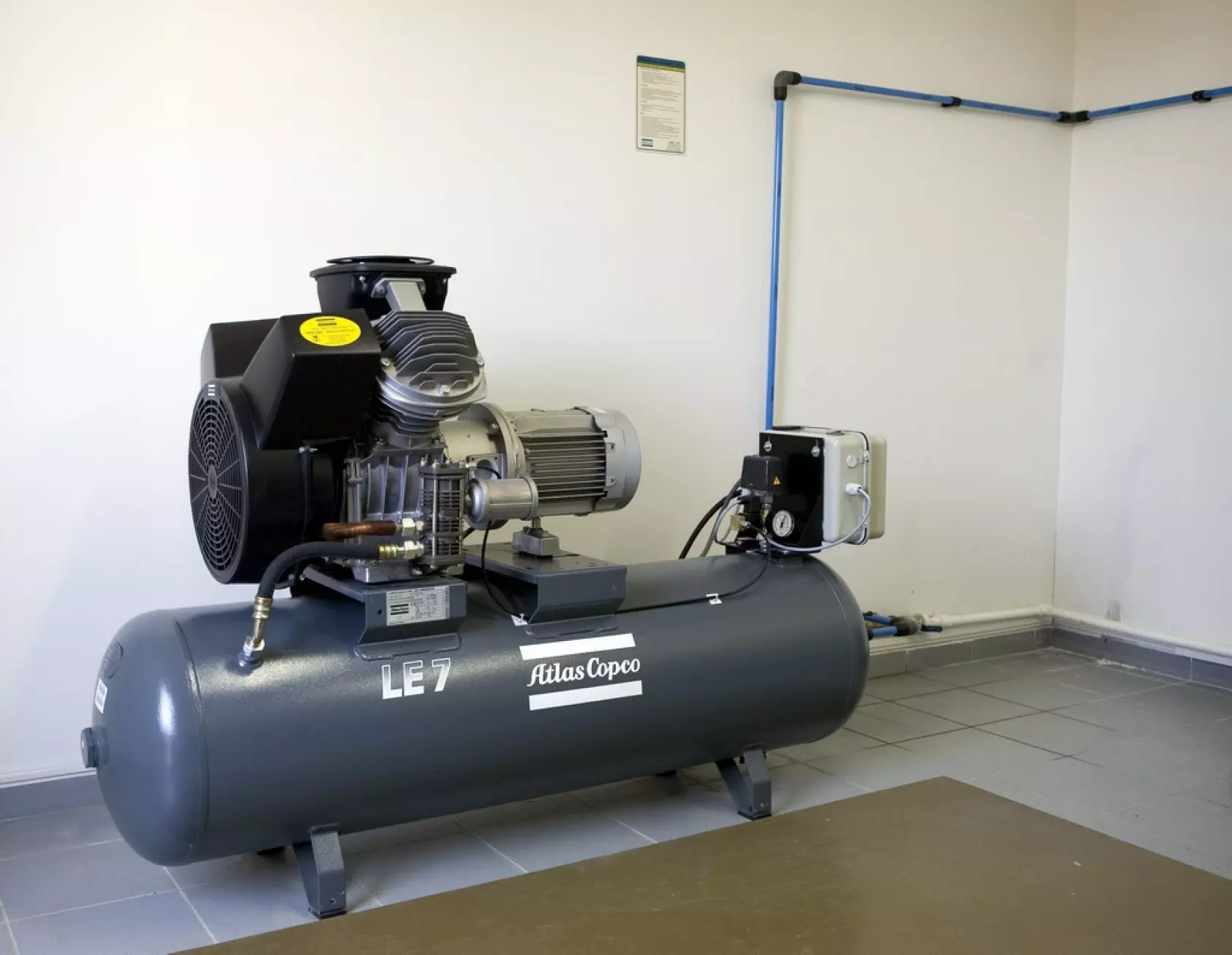 A regular piston compressor and some elements of an air compression system
A regular piston compressor and some elements of an air compression system 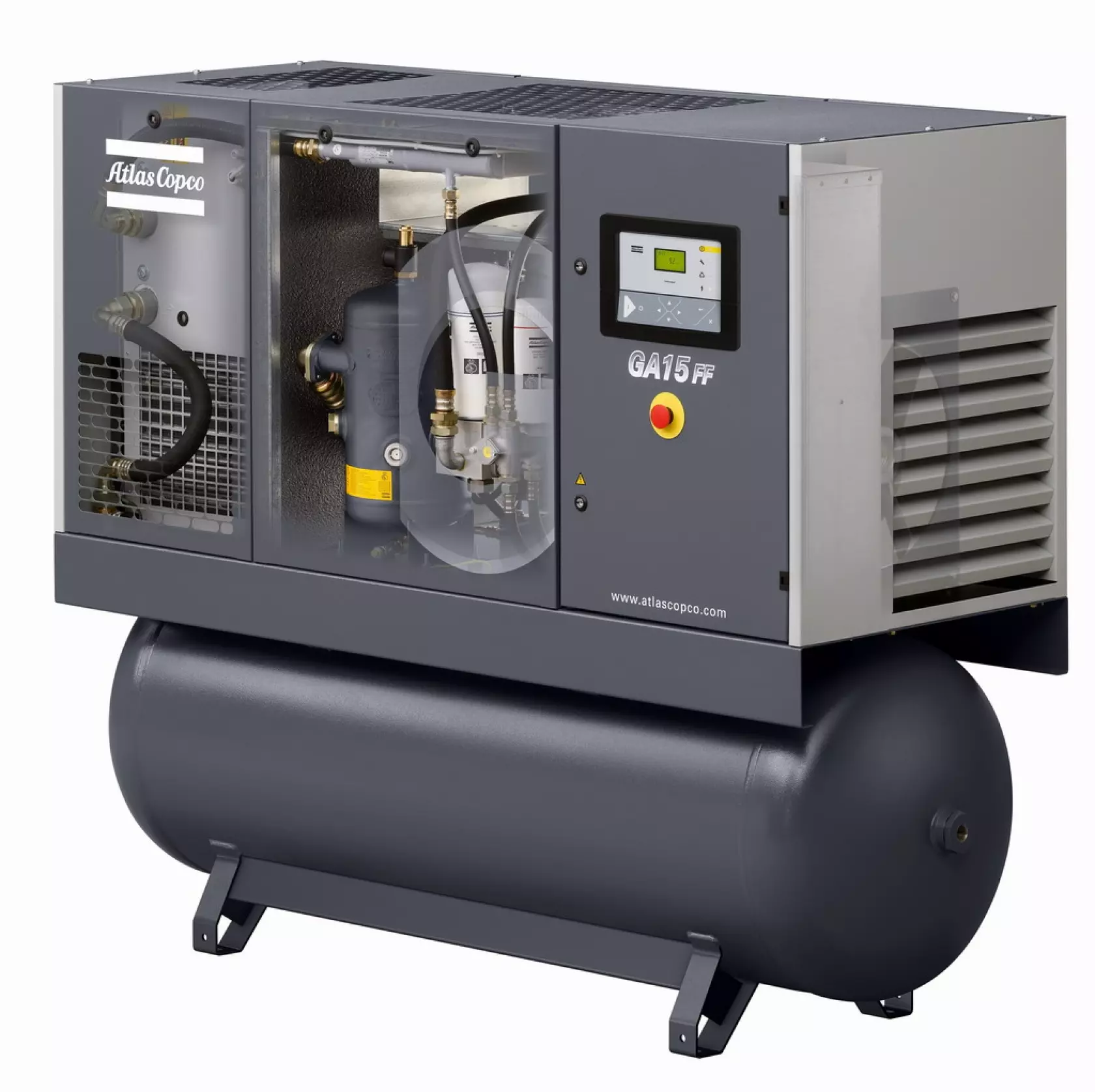 A screw compressor integrated with air dryer and air tank, equipped with a variable speed system, which adjusts the compressor’s parameters to the load of air-powered system. It allows to save up to 22% of electrical energy during its lifetime compared to a fixed-speed compressor
A screw compressor integrated with air dryer and air tank, equipped with a variable speed system, which adjusts the compressor’s parameters to the load of air-powered system. It allows to save up to 22% of electrical energy during its lifetime compared to a fixed-speed compressor  An example of a muted compressor and an air tank placed on the shop floor
An example of a muted compressor and an air tank placed on the shop floor 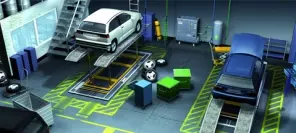




Nowadays, it’s hard to image making holes, grinding or cutting metal manually. But are power tools really necessary to perform all this work? Air-powered tools are an interesting alternative. But using them requires having a compressed air installation in a workshop. Small workshops usually use small mobile compressors. But it might be worth investing in a bigger installation due to subsequent maintenance costs.
Compressed air is one of the most important energy carriers in modern car service stations. But professional compressed air systems are also becoming more common in workshops that install gas supply systems in vehicles. Even if a given workshop doesn’t gave such system, making one with currently available technology is not a major problem. The most important thing is to choose the right size of compressor so that it fits the workshop’s demand for air.
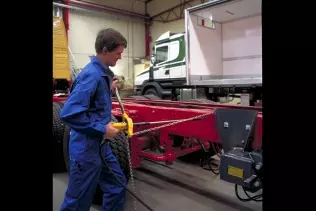 © Atlas CopcoA special drill used to make holes in trucks’ frames. It’s able to make holes as big as several mm in a single take. This tool seems like a necessary equipment for any workshop that installs gas supply systems in large commercial vehicles (gas tanks mounted on a frame section)
© Atlas CopcoA special drill used to make holes in trucks’ frames. It’s able to make holes as big as several mm in a single take. This tool seems like a necessary equipment for any workshop that installs gas supply systems in large commercial vehicles (gas tanks mounted on a frame section)Why air-powered tools?
Air-powered tools are much more effective, i.e. they have a much higher power at considerably smaller dimensions and mass. It’s estimated that a tool powered by compressed air is about 50% lighter than its counterpart powered by electricity. It simplifies the job of a serviceman and makes it less tiresome.
What’s more, tools powered by compressed air have one more big advantage, especially important from the point of view of workshops that install LPG systems – no sparks. The risk of fire in the case of these tools is much lower than with power tools that use commutation causing brush sparking on contact with a rotating commutator.
Structure of air-powered tools
The main element of an air-powered tool is a basic engine. Vane or turbine engines are used most often. Drive from the engine is transmitted directly to the spindle or via a gear, e.g. in angle grinders. To run a tool it is also necessary to have a valve that will open airflow. As you can see, air-powered hand tools are much simpler in structure than power tools, more reliable and much easier to repair.
Vane motors used in air-powered tools require lubrication. That’s why special lubricators are used with air intake slots, that dose suitable amount of oil to each receiver. It’s quite different with turbine engines where there’s no contact between moving parts. That’s why tools equipped with this type of engine do not require lubrication. On the contrary – to work properly they need to be powered by clean, dry air.
They have different connectors, which eliminates the risk of connecting them to a network equipped with lubricators.
Power tools
The main advantage of power tools is low price. But if we choose tools manufactured by recognized brands, the price difference between power tools and air-powered tools is negligibly small. But maintenance costs in the case of both types of tools differ significantly. Maintenance of power tools is much more expensive due to the fact that they break down more often. Statistically, power tools break down 5 times more often than air-powered ones because of a much more complex structure. Power tools have many components that work together mechanically (e.g. commutator and brushes), which makes things even more complicated.
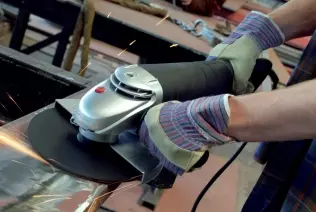 © BoschA Skill Masters electric angle grinder with power of 2.1 kW weighs 6 kilos. Its air-powered counterpart manufactured by Atlas Copco weighs much less than 2 kg (depending on a specific model)
© BoschA Skill Masters electric angle grinder with power of 2.1 kW weighs 6 kilos. Its air-powered counterpart manufactured by Atlas Copco weighs much less than 2 kg (depending on a specific model)Using power tools is sometimes much more convenient, especially those powered by batteries. Cordless screwdrivers, often used also as drills, are particularly useful in all sorts of assembly work carried out inside vehicles. They provide a much greater freedom of movement and the ability to work in confined spaces. But these types of tools are quite heavy (over 1 kilogram, half of which is taken by a battery). Similar air-powered tools are much lighter and smaller, but using them in similar conditions is difficult, because it requires using an air intake duct.
Compressed air system
When designing a compressed air system, one of the most important stages is choosing the right compressor (with performance suitable for its requirements). This is very important because compressed air is one of the most expensive energy carriers. During the compression process, about 50% of energy produced by the compressor’s engine is converted into heat. Assessing the need for compressed air should be carried out based on performance of devices and tools. Both too low and too high compressor’s capacity in relation to the requirements is not justified economically. Too “small” compressor will switch on very often trying to make up for shortages in performance. An oversized compressor generates high losses working on at idle run. But it always has to be a little bigger than needed, due to the fact that several devices might need to work simultaneously. It’s estimated that the compressor’s output should be 10% higher than required by tools. This provides some reserve necessary due to wear of tools and contamination of the system. If we plan to expand the system (by increasing the number of devices), even higher performance reserve must be used, to avoid replacing a compressor in the near future.
It has become quite popular to use compressors powered by engines with variable rotational speed in compressed air systems. It allows for continuous adjustment of the compressor’s output, depending on the number of receivers connected to the system. It is estimated that over the course of using such a compressor, it’s possible to save up to 22% of energy compared to a conventional device (with fixed output).
Modern compressed air systems usually use screw or vane compressors, which are gradually replacing piston compressors used previously. This is due to the need of ensuring proper air quality in the system (air compressed by a piston compressor contains large quantities of oil, which requires the use of oil separators). Screw or vane compressors are absolutely required in air-powered systems used e.g. in paint shops. They are considerably smaller and more efficient than piston compressors, so they operate for shorter periods of time (lower energy consumption), and a smaller (cheaper) air tank may be used, which requires smaller casing and takes up less space in a compressor room.
If there’s no special room in a workshop, a compressor in a special soundproof casing may be used, and it can be placed in the service room.
Another major problem with air-powered systems is the presence of water, which is transferred there along with air. Therefore special dryers are used in such systems.
Summary
It’s popular to believe that air-powered tools are much more expensive than power tools. But experience shows that the differences are slight, especially concerning purchase costs. Higher costs can only arise from the need to build a compressed air system, but savings generated from lower operating costs are significant. Given their higher durability it’s safe to say they’re a perfect solution for every workshop, including companies that install gas supply systems.
You may also find these interesting:
 loading results...
loading results...
